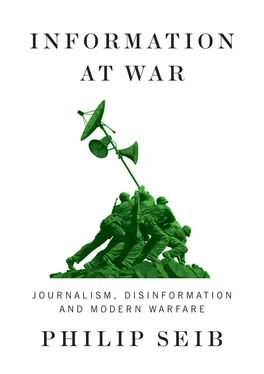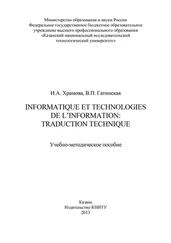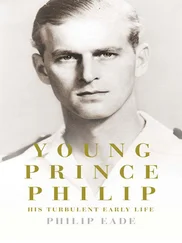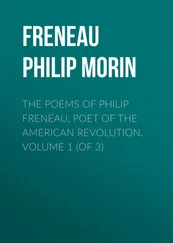Compared to the Bay of Pigs situation, the 1962 Missile Crisis was a very different matter, as the stakes involved were so enormous. At issue was not an invasion of Cuba by a ragtag military unit, but rather a real danger of nuclear war between the United States and the Soviet Union because of the placement of Soviet missiles in Cuba. Alerted by aerial reconnaissance photos, Kennedy had decided to impose a naval quarantine on Cuba as part of a strategy to force the Kremlin to remove the missiles. “Quarantine” meant a blockade, which under international law constitutes an act of war and, in this case, could easily have led to a confrontation between American and Soviet naval vessels. The United States was poised to launch airstrikes and an invasion force if the missiles were left in place, and US bombers armed with nuclear weapons were ready to attack the Soviet Union. Kennedy planned to address the American people and the rest of the world on Monday evening, October 22, and he was counting on the Soviet leadership not knowing beforehand about the American response to the crisis.
So, when Kennedy learned that the New York Times and Washington Post were prepared to run stories about the quarantine and US troop movements before the speech, the President asked Times publisher Orvil Dryfoos and Post publisher Philip Graham not to print information that would give the Kremlin time to issue its own ultimatum before Kennedy’s address. Graham quickly agreed, but the Times moved more slowly. Washington bureau chief James Reston called the president and, citing the agreement by the Times the previous year to withhold information about the Bay of Pigs, asked: “If we hold out on our readers now, are we going to be in a war against the Russians before we print another edition? Some of us wonder whether you are asking for secrecy until after the shooting has begun.” In response, Kennedy promised, “There will be no bloodshed before I explain this very serious situation to the American people.” 33
With that, the Times agreed, and it published only a vague report about “an air of crisis” in Washington. Kennedy gave his speech, which included this frightening message: “It shall be the policy of this nation to regard any nuclear missile launched from Cuba against any nation in the Western hemisphere as an attack by the Soviet Union on the United States requiring a full retaliatory response upon the Soviet Union.” 34After an exceptionally tense six days, Soviet Premier Nikita Khrushchev declared (after the United States had secretly agreed to remove its nuclear missiles from Turkey) that the missile sites in Cuba would be dismantled. The crisis was over.
These two Cuban crises illustrate how the news media operated as a gatekeeper determining what information reaches the public. As a matter of Constitutional law, news organizations could not be ordered to withhold information, but shared perceptions of national interest sometimes fostered de facto partnership. The public’s “right to know” became secondary to what news executives, in collaboration with the government, defined as a “need to know.” Between the government and the leading news organizations, a chokehold could be applied to the flow of information. Government officials and journalists could negotiate among themselves the timing for the public being able to learn important facts about a particular situation.
In 1962, was the withholding of information a proper role for the news media? During the Missile Crisis, the public was left in the dark, albeit briefly, but the exigencies of the situation may have dictated news organizations’ restraint as being in the public’s interest. According to Graham Allison, when the missiles in Cuba were first discovered, Kennedy’s national security adviser McGeorge Bundy told the president that they probably had a week before the news leaked. Kennedy took six days to formulate his response and “noted afterward that if he had been forced to make his decision in the first 48 hours, he would have chosen the air strike rather than the naval blockade – something that could have led to nuclear war.” 35
From the perspective of those at the White House, this collaboration between the press and the government was a good thing, as diplomacy had time to work and defuse the situation. But the gatekeeper role cited here has changed considerably in recent years. With the presence of expanded broadcast outlets and the arrival of social media, there are now so many information “gates” that they cannot be controlled by a few media executives. Today, rather than having Kennedy’s seven days to devise a plan, the time during which secrecy could be maintained would probably be closer to seven hours. If Twitter, YouTube, and other such venues had existed in October 1962, they would almost certainly have been filled with individuals’ reports about troop movements in Florida, leaks from people in government supporting and opposing the administration’s proposed measures, disinformation from the Soviets, and other content – some of it accurate and some of it not. With social media available, it would be relatively easy to circumvent any limitation on information, no matter how high-minded the intent. The president would have faced a far more demanding timetable for deciding what to do.
Even in the early 1960s, the government’s reliance on “national security” as a rationale for discouraging journalistic enterprise was wearing thin as a new, aggressive corps of correspondents made their presence felt. In their work during the initial years of the American presence in Vietnam, a number of these journalists reflected a more adversarial approach to covering their country’s military operations and a more confrontational attitude toward policymakers. In many ways, this was a contest for control of information, with news professionals rejecting the notion that they should be merely conduits for government-generated material and be deferential when the government wanted information altered or suppressed. They increasingly embraced their independence in their role as the principal providers of information to the public.
Among the most notable of these journalists was David Halberstam of the New York Times . Halberstam was not yet 30 years old when he arrived in Vietnam in mid-1962, and he soon became frustrated by what he considered stonewalling and false information from US officials – civilian and military – in the country. So, he went off on his own. He wrote to an editor at the Times : “There are no briefings to attend, no easy way of coverage. The only way to get a story here is to walk through the swamps and climb the mountains and ride the helicopters into battle. I have been shot at innumerable times.” 36
Halberstam saw it as a holy mission to tell his readers what was really going on in a war that, as yet, was receiving little attention from the American public and from most American news organizations. As his colleague William Prochnau later wrote, Halberstam understood journalism’s innate power:
As the media grew more influential in American life, it became more common among journalists, still is among some, to disingenuously diminish themselves – we have no power, we send out no armies, we raise no taxes, we only carry messages. Halberstam had no tolerance for such humbuggery. The press had power, the power to create images and myths, to tilt history, to drive large forces. 37
But journalists could not wield that power without encountering pushback. The government had ample power of its own and was willing to use it on occasion to undermine press coverage. An example of this occurred in August 1963, when Halberstam sent a story to the Times about South Vietnamese government attacks on Buddhist activists. Halberstam reported that Ngo Dinh Nhu, the brother and chief adviser of Vietnam’s President Ngo Dinh Diem (who was supported by the United States), ordered the attacks by secret police and special forces under his command, presumably with President Diem’s approval. President Diem denied this, claiming that the Vietnamese army, some of whose leaders were his political rivals, had carried out the attacks without his backing.
Читать дальше












